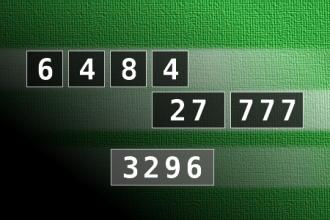Calculate the number 3296
NUMBERMANIA: Calculate the number 3296 using numbers [6, 4, 8, 4, 27, 777] and basic arithmetic operations (+, -, *, /). Each of the numbers can be used only once.
Car or Haircut
A young boy had just gotten his driver's permit and enquired of his father, if they could discuss his use of the car. His father said, "I'll make a deal with you. You bring your grades up from a C to a B average, study your Bible a little, get your hair cut and we'll talk about the car."
Well, the boy thought about that for a moment, and settle for the offer, and they agreed on it. After about six weeks they went in to the study, where his father said, "Son, I've been real proud. You've brought your grades up, and I've observed that you have been studying your Bible, and participating a lot more in the Bible study groups. But, I'm real disappointed, since you haven't gotten your hair cut."
The young man paused a moment, and then said, "You know, Dad, I've been thinking about that, and I've noticed in my studies of the Bible that Samson had long hair, John the Baptist had long hair, Moses had long hair and there's even a strong argument that Jesus had long hair also."
To this his father replied, "Did you also notice they all walked everywhere they went?"

